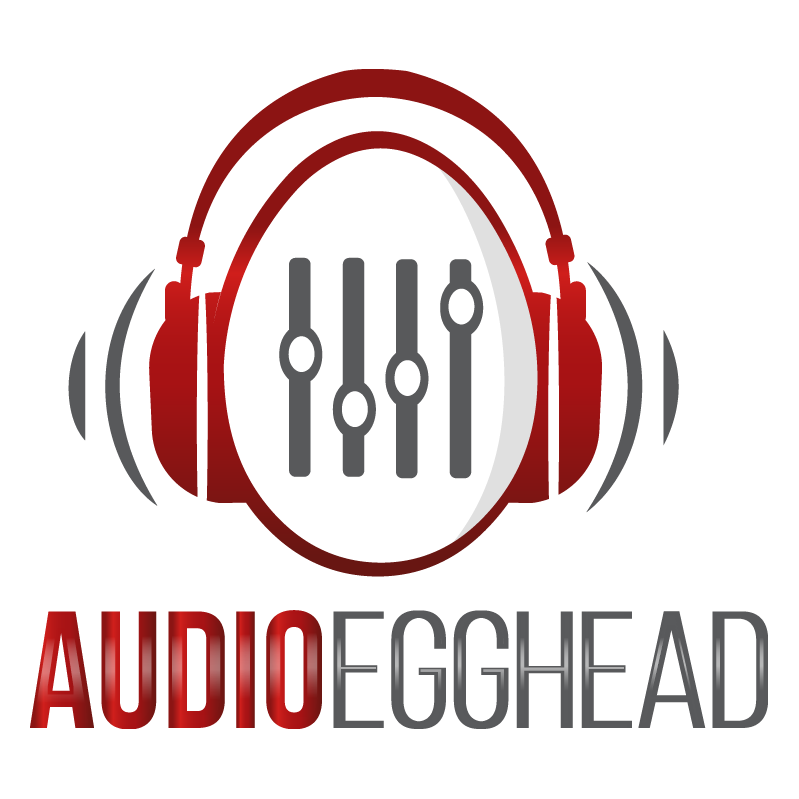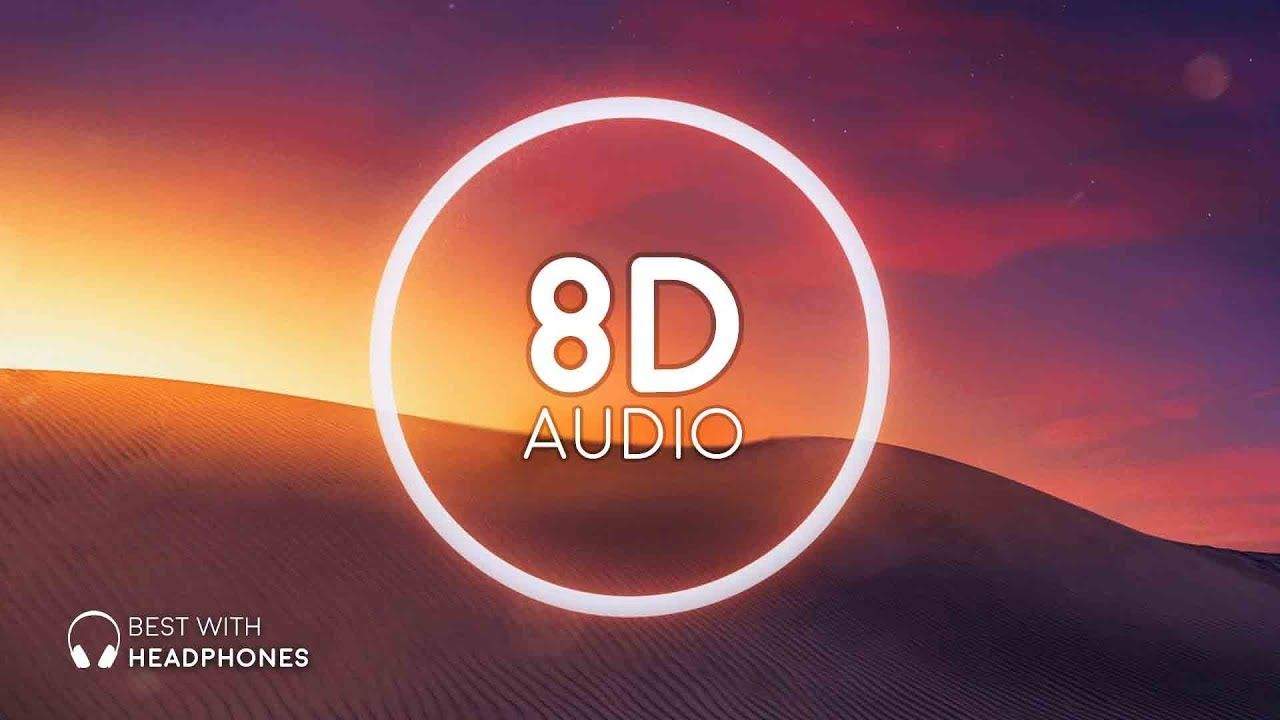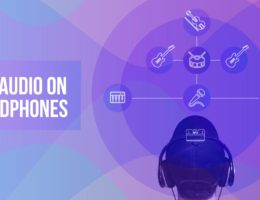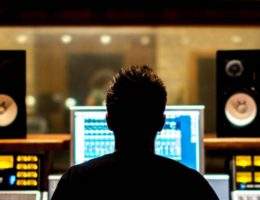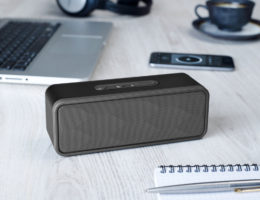People have been creating personalized interpretations of popular music for decades. From remixes to DJs and electronic music, talented producers sample bits from multiple tracks and use that as a template for further audio experimentation. One of the newest of these is 8D Audio. But what is 8D Audio, and how is it unique?
So, what is 8D Audio, and how is it unique? 8D audio a technique that takes an existing song and creates movement and fluctuates sound levels between side and position, creating an effect where the music feels like it continuously moves around the listener. Although anyone can make a song 8D, the majority of 8D mixes on the internet are more popular songs.
Although, when listening on your sound system or headphones, it might seem like anyone could recreate this effect by just adding reverb and panning left and right, there’s actually a bit more to it than that.
Ideally, the movement of the sound should match the feel of the music, allowing the user to feel something like the experience of swaying to the beat at a concert. Although the production may take effort, tools to make 8D Audio are readily available, allowing producers to easily create tracks. Thanks to the internet, tracks spread worldwide, and producers come from many different countries.
But there isn’t much production required to make these tracks. We’ll go into how to create 8D audio yourself later in this article.
What Is 8D Audio and Why Is It Special?
If you’re hearing it for the first time, it can be pretty mind-blowing. 8D Audio creates the sensation of music moving about the listener to create a virtual reality experience.
It might even trick you into thinking you took your headphones off and that the music is playing from speakers in the room. This adds an extra layer to the feel of the music beyond just the songs.
When done correctly, it can add an immersiveness and a bigger sound to songs that they already love.
“8D Audio” Isn’t New: Here’s How it Was Previously Being Used
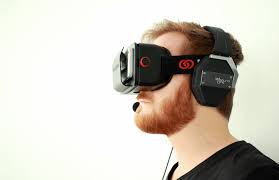
This sort of sound is not a new creation. Previously, this could be done by recording sounds with multiple microphones. Essentially, it’s 3D audio—similar to what’s used for VR to make the listener feel as though they are hearing the audio from their perspective with both ears.
By playing this 3D audio back through a set of speakers that surrounded the listener or headphones, one could hear the exact location of these sounds. This is called ambisonic audio, or binaural audio.
One demonstration of this technology used clippers at a barber, and people could hear exactly where the clippers were cutting hair around their head. This is the same time of recording used to make ASMR (Audio Sensory Meridian Response.)
How the Technology is Applied to 8D Audio
However, in the case of “8D audio,” we are really just taking this same idea and applying it to the finished song (1 master track) and making it move in a circle around the listener. And in many cases, adding a little reverb to it first, to give it that “live” feel.
Some producers compare their art to the feel of walking around a concert (aside from the constant rotating), but others simply say it a new experience. No matter what the exact experience says, many people have asked themselves, “What is 8D Audio?” and have decided that it is something they like. One site reported 185 million views in 4 months—who doesn’t want to feel like they’re watching live music right now (with the COVID shutdown)?
What Is 8D Audio Trying to Create?
By replicating the effect of a moving source of sound, 8D music creators design an audio experience that many find soothing and relaxing. Some describe it as an out-of-body experience, though that might be a tad dramatic.
Many of those who listen often find that this gives them a sense of escape, more so than normal stereo music. And like music, some even find an escape from physical pain and discomfort. Still, the goal of those creating these tracks is to have the music move in a manner consistent with the song. Any additional benefits, though appreciated, may be unintentional. Still, for those who gain relaxation or relief from this music, the benefits are extremely valuable.
More than anything, 8D Audio is simply adding a new experience to a song. Some feel like any novel experience is fundamentally exciting for the ears. Because the effect is soothing and ethereal, some producers feel that this works best for music with a sense of atmosphere, something like trance or other similar styles. However, producers from around the world have created this sort of sound with many genres, from rock to electronic to classical, and they do not feel limited by any particular rule.
How Is 8D Audio Different From Panning on a Stereo System?
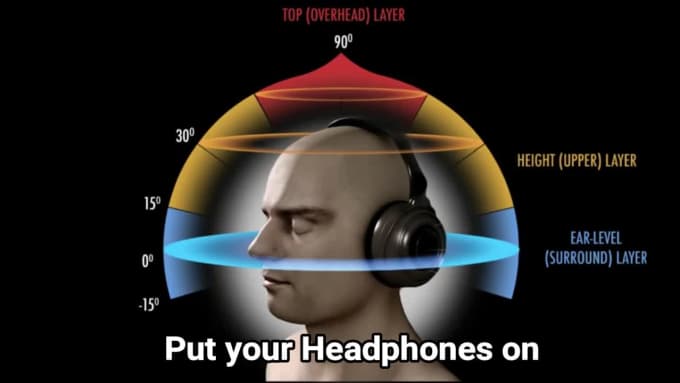
One criticism of this type of music is that it’s as easy as turning the balance right and left fader knobs on a stereo system. 8D audio has the illusion of having more dimensions than just left and right. With 8D Audio, the sound seems to move around you in a 3D environment.
So it really isn’t just as easy as panning left and right. You’d need a plugin to create the 3D environment.
Since only the master track (the complete song) is put through this effect, all though it can give it a “live” sound, individual parts (such as the lead instrument or backing vocals) won’t sound like they’re coming from different directions. Instead, it will sound like a speaker is playing the whole song and rotating around you—which is still a pretty cool effect.
What Is Required to Experience 8D Audio?
The standard equipment required for 8D Audio is a pair of headphones. If people try to use a two-speaker audio system for 8D Audio tracks, they will not experience the full sensation of the music moving around them.
Also, high-quality headphones will enhance the effect and create a better experience compared to cheap headphones. Open-back headphones will give you a wider stereo field as well.
The most popular way to experience 8D audio is to use headphones, but a 7.1 or similar audio system can also be used for 8D Audio if the listener sits in the middle of all the speakers. Movie theaters sometimes have short clips featuring ambisonic audio to demonstrate their sound systems, and 7.1 home theater systems replicate this feature.
Where Can 8D Audio Be Found?
If you’re asking ‘what is 8D Audio,’ you probably also want to know where to find it. 8D Audio is currently being created by independent producers to introduce a new experience to a familiar song.
Like much music created by, the most common place to find 8D versions of audio is YouTube. One channel, 8D Tunes, has over 6.25 million subscribers.
What Songs Are in 8D?
Any song can be made into 8D. While working on this article, I actually learned exactly how and made a few of my own, including some of my own music (shoot me an email if you really need a song in 8D but can’t find it – jared@audioegghead.com).
But many of the tracks on this channel are popular songs in the electronic dance music (EDM) scene. This is expected since 8D Audio is electronic, but many classic rock songs have been posted as 8D songs, such as Bohemian Rhapsody.
Another example of a band that has been remixed into 8D music is Imagine Dragons. While I’m not a fan of most super popular music, I was able to find one artist that I like in 8D…Tame Impala.
Other genres are featured as well. You can even put 8D mixes on your favorite playlist because they can now be found on Spotify. Mel Magazine has helped popularize the 8D wave by discussing what it is and who is making it in articles, mainly discussing the Aviion Music Youtube channel.
On the YouTube channels, one will find 8D tracks spanning the musical landscape. On a random play, one will hear acappella, popular rock, European EDM, and movie soundtracks. The movement of the sound will also vary with each song, creating and enhancing the emotion and feel of the music.
How to Make 8D Audio (And More About its Name)
Where the Internet Says its Name Comes From
The internet claims that 8D Audio is called 8D audio because the music sounds like it comes at the listener from 8 different directions or 8 dimensions. I’m skeptical that this is the reason.
Some people also claim their tracks are 11D or 12D, but they sound exactly the same as 8D—so I’m also skeptical that that really means anything.
How to Make it
I started by watching some YouTube videos and reading some articles to find out how to make 8D audio myself. But I never really found the one that gave the results. But I did find the software I needed, and by experimenting, I got it down.
Step 1:
When I create 8D audio, I use a VR plugin (Seinheiser Ambeo Orbit) to make the song circle around the listener—but that really isn’t enough to give it the 8D effect all by itself.
Step 2:
I also duplicate that same track, add a reverb to it, and turn the dry/wet to 100%. I then add the same VR effect and reverse the rotation, but make sure it’s the same exact speed. The dry signal and reverb signal then continuously rotate around the listener in opposite directions.
The reverb really is key; otherwise, it just sounds like the song is panning left and right.
If this article sparks enough interest, I’ll make a tutorial video. Just shoot me an email. But here’s a quick screenshot of what it looks like when you’re done.
Track Details
Track 1 is just a reference—I just like to switch back and forth to hear the original vs. the 8D version.
Track 2 is the “dry” track, with only Ambeo Orbit on it. Rotating clockwise.
Track 3 is the “wet” track. That track is set to “sends only” and is sending to my A return (I made it a little more complicated than I needed to, I guess)
Return A is where track 3 is sending. Reverb is on and set at 100% wet (I also cut the low and high ends from the reverb). After that, I also have Ambeo Orbit on it, but this time it rotates counterclockwise at the exact same speed.
Other settings:
I turned both down a bit and added a limiter to the master, just to avoid any peaking.
Note my Ambio Orbit settings in the 2nd image. The only thing I automate is the rotation (or what they call the “Azimuth.”
I didn’t touch the “Elevation” knobs, because they just didn’t sound good in my opinion (or realistic).
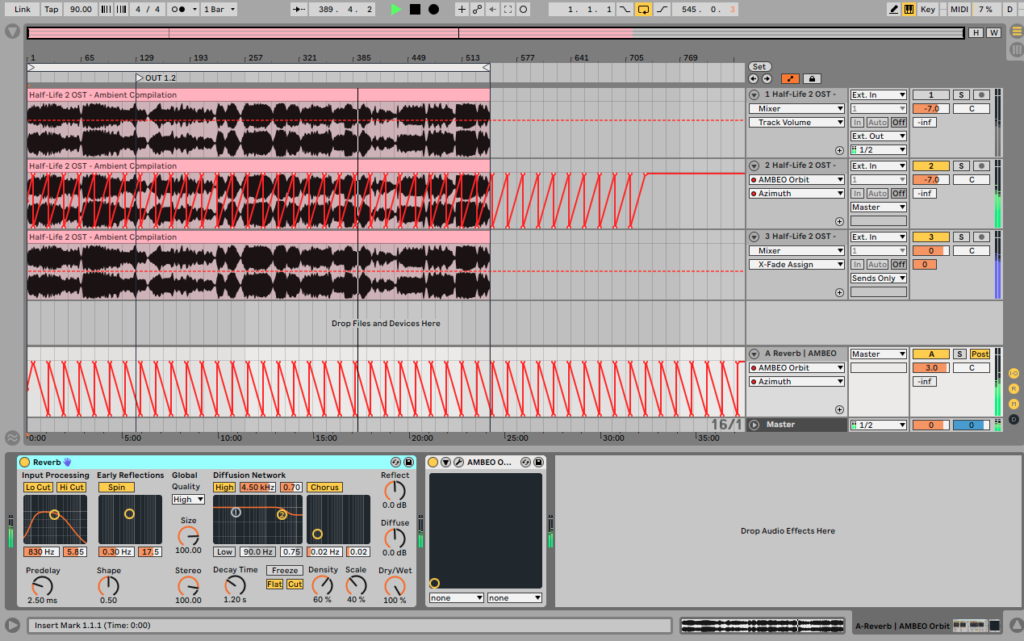
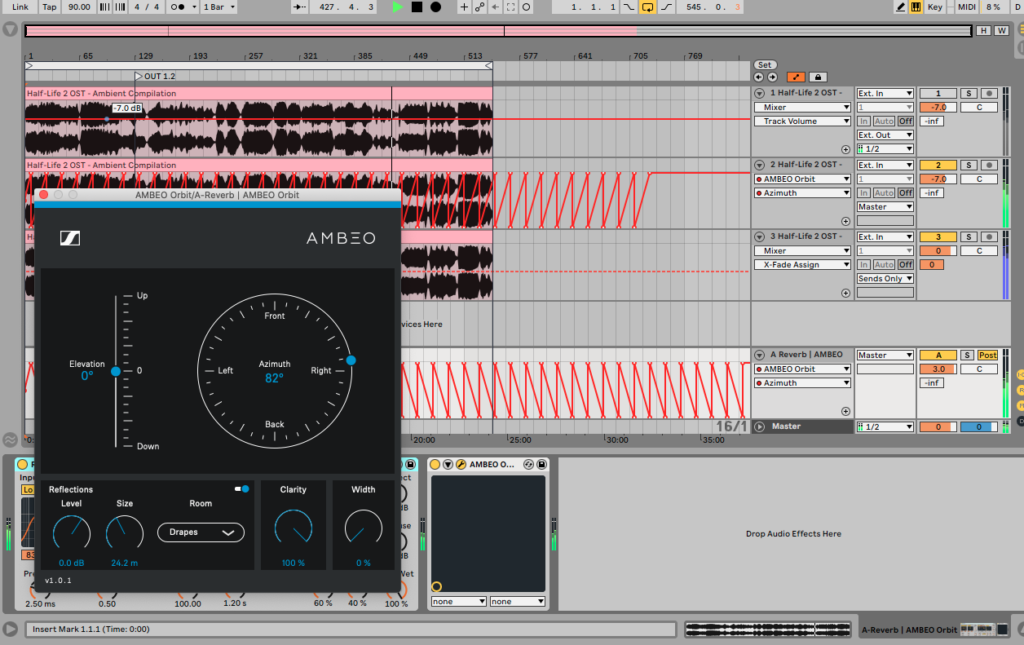
Where I Think the Name Could Come From
When you think about it, these patterns are almost like a figure 8. Maybe that’s why the original creator referred to it as 8D? I really have no idea. But it certainly isn’t 8 dimensional. 3D at best. Either way, it does put an interesting twist on your favorite music.
Where Does 8D Audio Belong?
One interesting point is that sources may disagree as to 8D Audio’s place in the music spectrum. People debate as to whether it is a genre, a style, or merely an interesting effect that can be applied to music of any sort. It is even used in a storytelling podcast called The Diary of Atlas Stark.
In my opinion as an audio engineer, producer, and audiophiles, it’s really just an audio effect.
What Equipment / Software Is Required to Make 8D Audio?
Since these tracks are simulated electronically, the only equipment required for this type of music is a computer.
Beyond a computer, you need:
- i class=”fa fas fa-check-circle”>A DAW (Like Ableton, Logic, etc. Audacity is a free option)
- i class=”fa fas fa-check-circle”>AMBEO Orbit (A free binaural panner plugin)
- i class=”fa fas fa-check-circle”>Reverb plugin (stock is fine)
Creating 8D Audio is much more complicated than sending a song through a filter or two on a computer program. To my knowledge, there isn’t an automated upload and transform website up (yet). And if there is one, I would be skeptical that it’s really creating quality 8D.
Other Suggestions From the Internet
One guide I came across also suggests mixing in white noise and making low end sounds mono, not stereo.
The speed of the rotating and the amount of reverb should match the feel of the song, which is why some creators feel that pop and hip-hop songs with a bouncing beat might not work as well when panned in a circle compared to ethereal sounds.
I mostly use ambient and spacey music. Drums can seem like a bit much when they’re rotating around your head.
However, keep in mind, there is no agreed-upon standard as to what makes up proper audio movement for 8D Audio. One producer keeps his methods secret because he does not believe that any other artists create the same sound movement as his technique. Others say that listeners can tell the difference between good and bad 8D Audio, with the first 8D tracks lacking the nuance and creativity of the audio movement effects.
I’m no expert on the subject—just an experienced producer with an interest.
What Artists Record 8D Audio?
Recording artists do not record their music in 8D Audio or any ambisonic format. This makes sense because a recording artist must make music to be heard over speakers, not just headphones.
It is not an actual new recording. 8D Audio requires headphones to really hear and understand what’s going on. However, independent producers and creators can “borrow” these recordings from recording artists, work post-production magic on them using computer technology, and create tracks that move around the listener.
As for now, 8D Tunes, and Aviion Music on YouTube may be some of the bigger channels out there for now.
The Future of 8D Audio
Although critics may not all agree about what 8D Audio is, the fact remains that it is a growing trend in music. By adding the sensation of movement and environment to songs, creators have formed YouTube channels with millions of subscribers based mainly on remixes of existing songs.
Though it is restricted to listeners on headphones or with home theater systems, listeners have given hundreds of millions of views. And this has all occurred without any real advertising. Perhaps the future looks bright for this and similar audio formats.
